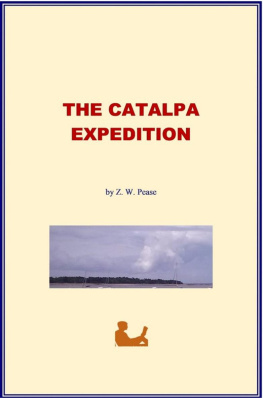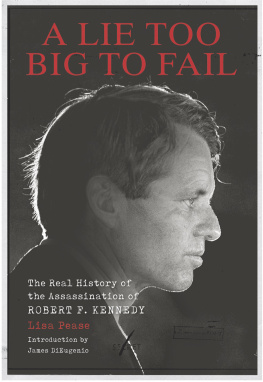| Note: | Images of the original pages are available through Internet Archive. See https://archive.org/details/catalpaexpeditio00peas |
pic
CAPT. GEORGE S. ANTHONY
Commander of the Catalpa
THE CATALPA EXPEDITION
BY
Z. W. PEASE
WITH ILLUSTRATIONS
pic
NEW BEDFORD, MASS.
GEORGE S. ANTHONY
1897
Copyright, 1897,
By GEORGE S. ANTHONY.
All rights reserved.
INTRODUCTION
One hundred years after the Declaration of Independence, an American whaling captain, George S. Anthony, commemorated the event by enforcing another declaration of independence which set free the Irish political prisoners who were sentenced to a lifetime of servitude in the English penal colony in Australia.
The story of the rescue of these prisoners in 1876 is a brave incident of history which has hitherto been told too briefly. When Captain Anthony, commanding the bark Catalpa, landed the men for whose relief the expedition was planned, at New York, public interest in the romantic voyage was very intense. The boldness of the raid upon the English colony and the remarkable features of the conspiracy, excited universal curiosity concerning the details of the affair.
At that time international complications seemed certain, and there were many reasons why those concerned in the rescue furnished only meagre information of the inception of the plan and its progress during the two years which were spent in bringing it to a successful consummation.
Brief newspaper accounts appeared at the time, and this material has been worked over into magazine sketches. The frequency with which the original newspaper story has been revived during the years which have elapsed suggested that the interest was still alive and led to the writing of the story which follows. The facts were contributed by Captain Anthony, who placed his log-book and personal records at the disposition of the writer, and the present version is authorized by the man who was most prominent in it.
Some of the incidents of history which led up to the Fenian conspiracy in 1867 are compiled from familiar sources. The records of the court-martial are from transcripts of the proceedings made in Dublin expressly for this book, and have never previously been published.
No attempt has been made to embellish the narrative. It has been the effort of the writer to tell it simply, as he knows the gallant commander would best like to have it told.
New Bedford, Mass., 1897.
CONTENTS
| CHAPTER | PAGE |
| I. |
| II. |
| III. |
| IV. |
| V. |
| VI. |
| VII. |
| VIII. |
| IX. |
| X. |
| XI. |
| XII. |
| XIII. |
| XIV. |
| XV. |
| XVI. |
| XVII. |
| XVIII. |
| XIX. |
| XX. |
| XXI. |
| XXII. |
| XXIII. |
| XXIV. |
| XXV. |
| XXVI. |
| XXVII. |
| XXVIII. |
| XXIX. |
LIST OF ILLUSTRATIONS
THE CATALPA EXPEDITION
CHAPTER I
SAILING OF THE CATALPA
On an April morning in 1875, the whaleship Catalpa lay at anchor in the harbor at New Bedford, ready for sea. Although the whaling industry was waning on the ebb tide, there were yet over a hundred whaleships sailing out of the port of New Bedford, and the departure seemed to call for no unusual notice.
It was a pretty spectacle, to be sure. The still waters, the green pastures running down to the shore of the lower harbor, and the ship, trim and taut. For, while a whaleship suggests to many a greasy, clumsy hulk, the outgoing whaler is actually as ship-shape and clean as a man-of-war.
The yellow sun shone on the yellow hull of the Catalpa. Her rigging was aglow with fresh tar, and her gaudy colors and signal flags gave her a holiday appearance alow and aloft.
Presently the sailors are on the yards, shaking out the sails. The captain, with his papers under his arm, the very picture of a captain, by the way, strong and athletic in figure, with ruddy cheeks and life and fire in his bright eyes, goes aboard with the agent and a few friends, who are to accompany him down the bay.
The pilot instructs the mate to get under way, the anchors are soon on the bow and the chains stowed. The vessel sails out of the harbor, for in these days tugs are a luxury which the sailor despises, and soon the Catalpa is sailing briskly under fore and main topsail, main topgallant-sail, spanker, gafftopsail and staysail and flying jib.
Late in the afternoon the captain says good-by to his friends. The wind is blowing freshly from the southwest.
"Stand on the port tack two hours longer, then tack out and you will be clear of land," said the pilot, and, with the prosaic wishes of "good luck," departs.
Later the wind hauls to the southward. Before midnight the captain has the vessel under short sail and is working off shore.
And this seemingly commonplace commencement of a whaling voyage is, in truth, the story of the departure of one of the most boldly conceived and audacious expeditions against the English government which was ever planned,the only important Fenian conspiracy which was ever entirely successful.
Standing upon one of the wharves on the waterfront, a man in a dark frieze ulster watched the incidents of the morning with absorbing interest. His eyes said a fond good-by to the captain as he rowed out to the vessel, for he dared not risk an appearance in the group which had assembled about the captain for a handshake. He was one of the few men who knew that greater perils than those which usually await the men who go down to the sea in ships must be met by the captain if he was true to a great trust, and that the vessel was going out in response to the cry of men who were outcast and in chains because they loved their country.
CHAPTER II
FENIAN HISTORY
"This is serious business now," said a clever English literary man when he heard of the Fenian organization. "The Irish have got hold of a good name this time; the Fenians will last."
The Fenians were the ancient Irish militia organized in the third century by Fionn or Finn, who is said to be the Fingal of Ossian. In Scott's "Antiquary," Hector M'Intyre, jealous for the honor and the genuineness of Ossian's songs of Selma, recites a part of one in which Ossian asks St. Patrick, the patron saint of Ireland, whether he ventures to compare his psalms "to the tales of the bare-armed Fenians."
"There can be no doubt," writes Justin McCarthy, "that the tales of the bare-armed Fenians were passed from mouth to mouth of the Celts in Ireland and the highlands of Scotland, from a time long before that at which any soothsayer or second-sighted sage could have dreamed of the landing of Strong-bow and the perfidy of the wife of Breffni. There was an air of Celtic antiquity and of mystery about the name of Fenian which merited the artistic approval given to it."
The Fenian agitation commenced in 1858, following the Phnix clubs in the sequence of the secret associations which have been so prominent in Irish history. Had it not been for the American civil war, it is quite likely that it would have lacked the fame which it subsequently won, but the strained relations between England and America inspired the hope that war between the two great nations might follow, and that this would afford an auspicious opportunity for the uprising for Ireland's independence, which has ever been uppermost in the minds of the Irish patriots. Then the war had created the Irish-American soldiers, who were inclined to consecrate their energies to a new purpose in behalf of their native land.













